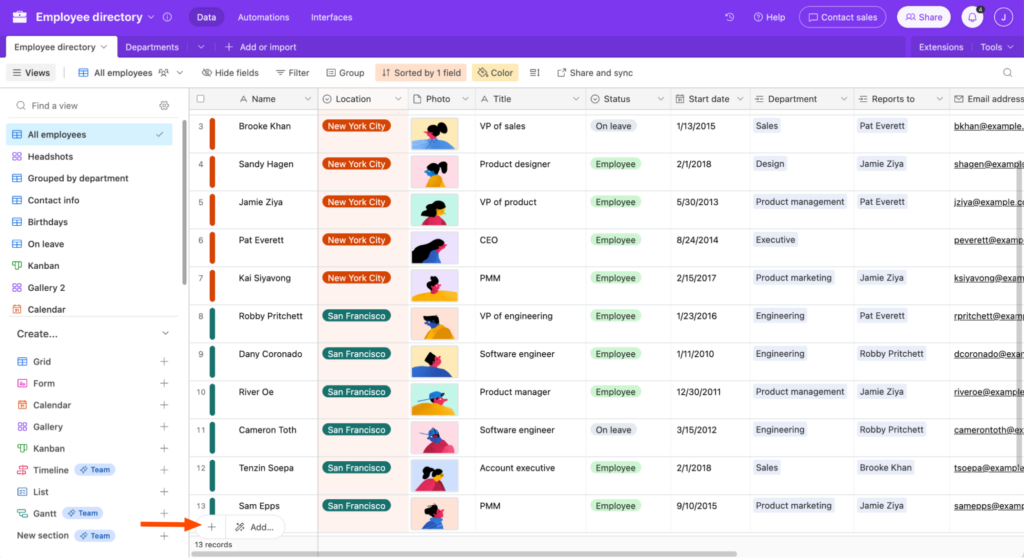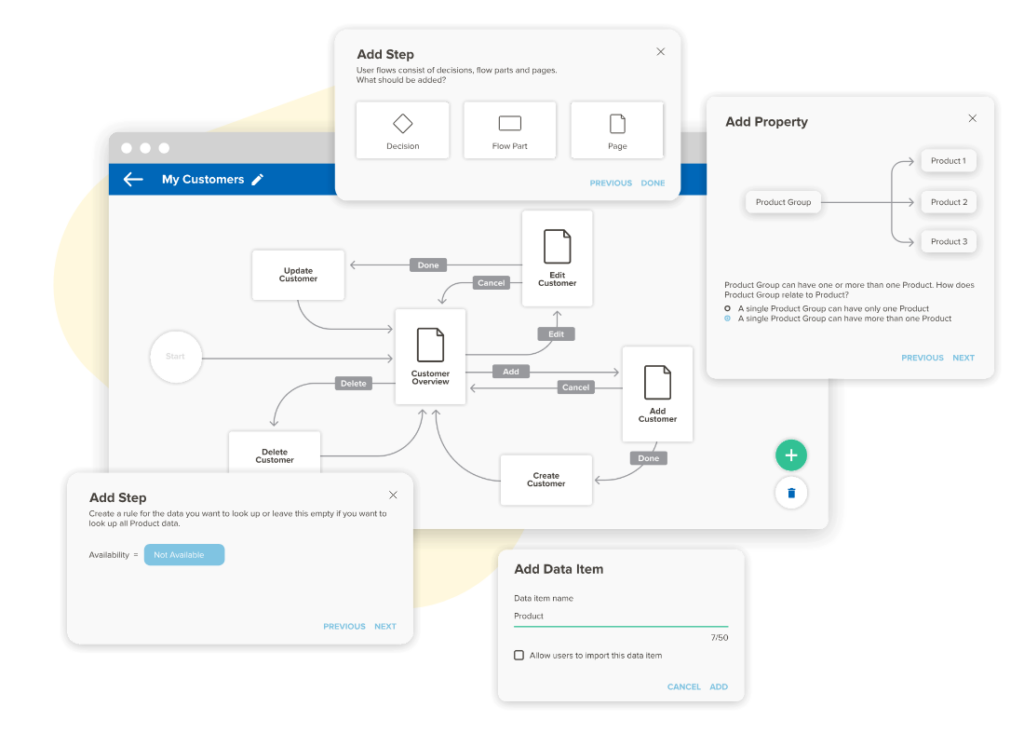Get Started now!
ezeep Blue is completely free for up to ten users. Sign up and get started with just a few clicks.

Enterprises are constantly seeking ways to streamline operations, reduce costs, and enhance productivity. This is where no-code apps and no-code automation shine, offering a groundbreaking approach to digital transformation.
Low code is a transformative approach to software development that enables users to design and deploy applications with minimal traditional coding. It utilizes a visual development environment, where applications are built using drag-and-drop features and pre-built templates. This innovation simplifies the development process, allowing for rapid customization, deployment, and iteration. Low code platforms democratize technology, making application development accessible to users with limited or no programming expertise.
The terms “no code” and “low code” often appear in the same discussions about modern software development platforms, but they cater to different user bases and offer distinct capabilities. While low code is tailored for speeding up development with the option for customization through minimal coding, ideal for professional developers seeking efficiency and flexibility, no code is focused on enabling those without any programming background to easily create applications, offering a straightforward, drag-and-drop interface to democratize software development across an organization.
Low code platforms are not merely a passing trend; they represent a fundamental shift in software development. They empower a broader spectrum of users to develop complex, robust applications, streamlining operations across various sectors. Key advantages of low code include the democratization of application development, cost efficiency by reducing the dependency on specialized developers, and the provision of scalable, easily maintainable solutions.
Gartner predicts that the global market for low-code development technologies will continue to grow and that 75% of all new applications will be created using low-code development technologies by 2026. This shift is driven by the need for rapid application development, cost reduction and the democratisation of technology.
Low code use cases extend to project management, where non-technical project managers can create custom task trackers and dashboards without writing a single line of code. Pretty much all low code solutions offer a wide range of templates to build a project management tracker – here are some templates from Airtable to get your teeth sunk into.

Low code examples in CRM allow businesses to customize solutions for tracking customer interactions and managing sales pipelines, enhancing customer service. Wtih database-driven low-code solutions such as Glide or Airtable, you can easily build a CRM with little coding knowledge. Here is a guide from Glide.

Automate HR processes such as onboarding, data management, and performance evaluations with low code platforms, improving employee engagement and productivity. The no-code solution Softr, which specialises in allowing its users to create very user-friendly dashboards and websites, offers a suite of features for building a platform to manage employee onboarding, talent development and more.

Tailor-made inventory tracking and supply chain management tools developed through low code platforms offer real-time insights and operational optimization. One of the key advantages that low code solutions can offer here is the wide range of automation that can be baked in. Warehouse and retail operations fulfill their orders, print their labels, invoices, and trigger processes between different systems with minimal effort. Triggre is one solution is offers a wide range of features for automating supply chain management, all in the low-code sphere.

Low code platforms facilitate accurate and efficient financial reporting, budget tracking, and expense management, aiding better business decisions. Last on the list of our no-code recommendations is Notion, which offers a bunch of great templates for financial planning and reporting.

With its API and JavaScript library, ezeep Blue is simplifying the integration of printing into low-code web applications, offering direct printing that bypasses traditional methods of local PDF generation.
We can directly integrate printing in any kind of web application via the ezeep Blue API or ezeep.js. ezeep.js is a JavaScript library which easily offers printing capabilities to any web application. For example, you can use ezeep.js to add a “print now” button your app, so that users can trigger a print job output on the frontend. Alternatively, if workflows need to trigger print jobs from the backend – for example, your order fullfillment service needs to print an invoice automatically once a new order is received – you can use the ezeep API to enable your backend to send a print job to a remote printer.
Whether a user selects printer in a front-facing web application, or a backend system wants to send a print job automatically to an end user’s printer, ezeep Blue is well equipped to handle the task, regardless of your printer model.
Our collaborations with Zapier and Make also allow our users to automate print workflows without coding, easing the automation of tasks in applications like Airtable and elevating efficiency for all skill levels.
In conclusion, the emergence of low code platforms marks a significant evolution in the landscape of software development, offering a bridge between the complex world of traditional coding and the dynamic needs of modern businesses. By enabling both technical and non-technical users to contribute to the development process, low code technology is not just simplifying application creation but is also empowering enterprises to innovate and adapt at an unprecedented pace. Highlighting the range of low code use cases, from enhancing project management efficiencies to revolutionizing customer relationship management, and streamlining financial operations, underscores the broad and transformative impact of low code on various sectors.
With the help of ezeep Blue, companies which are leveraging the low code ecosystem can broaden their impact beyond software development to include printing and document management. This not only boosts operational efficiency but also promotes sustainability within organizations, further illustrating the versatile applications and benefits of low code use cases in modern enterprise environments.
ezeep Blue is completely free for up to ten users. Sign up and get started with just a few clicks.